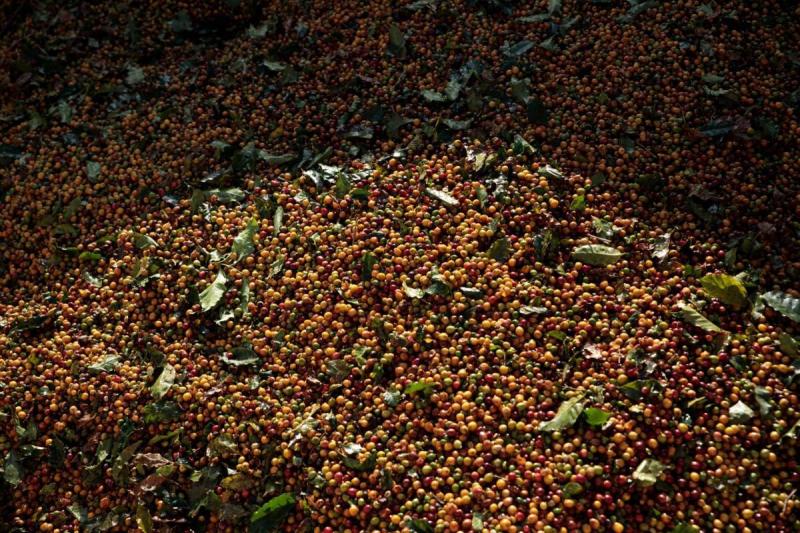The largest coffee-exporting country in the world is facing temperatures not seen in over 25 years, diminishing hopes for harvests and threatening to increase prices for popular beverages. According to measurements on Tuesday, temperatures in Brazil's coffee-growing regions fell below zero across the southern state of Minas Gerais, marking the coldest weather since 1994, according to "Rural Clima." Frost is expected to continue in the southernmost part of the country, with another cold snap anticipated on July 29. Coffee futures in New York jumped by as much as 7.7%, reaching their highest levels since 2016.
The frost represents a second blow to farmers after severe drought left fields parched and water reservoirs for irrigation depleted. Moreover, the drought could worsen, with predictions of a potential return of "Nina" weather patterns that delay rainfall in the region. This series of calamities may lead consumers to pay higher prices in cafes and stores.
Francisco Cesar de Giacomo, a farmer in São João do Sabokai, Minas Gerais, reported that the frost affected about 60% of his farms. In a text message, de Giacomo confirmed that "the entire crop burned in some areas of the farm." Frost can scorch the leaves and branches on the trees, reducing expectations for 2022 and shattering hopes for a bountiful harvest that could replenish stocks. This is particularly significant since coffee trees have a two-year cycle, and are expected to yield more in the next season.
Régis Rico, a director at RR Consultoria Rural, stated that many fields were already pruned last year to produce in 2022, but now their potential output will be reduced. He remarked that after the drought and frost, next year could be the worst production cycle in decades.
**Low Stocks**
The last two frost events have jeopardized between one million and two million bags of Brazil's crop in the 2022-2023 season, according to a survey by Minas Gerais-based "Cazarina Trading," which included exporters and agricultural engineers. The drought that occurred earlier this year reduced the production of the Arabica variety, the type favored by Starbucks. In northern São Paulo and Trinidade do Mineiro, in Minas, soil moisture levels are around 20%, significantly lower than the 60% needed for crop development, according to "Rural Clima."
There are also indications of reduced productivity this season for Brazilian Robusta beans, used by companies like Nestlé in their popular Nescafé instant drink, whose demand has surged during the coronavirus pandemic. There is a 45% chance of "Nina" weather patterns returning between August and October, a 55% chance from September to November, and a 62% chance from October to December of this year, according to the U.S. Climate Prediction Center. There is little preparation, as the U.S. Department of Agriculture expects Brazilian stocks to end the season at their lowest levels since records began in 1960, and U.S. green coffee stocks are down 18% from last year. Hernando de la Roach, Senior Vice President at StoneX Financial Inc., stated that given all the disturbances, a return of "Nina" weather is "likely to give new momentum to prices."
**Colombian Issues**
These weather problems coincide with delays in shipping from Colombia due to political unrest and rising shipping costs, making the transportation of beans more expensive for traders around the world. For Carlos Mira, head of agricultural research at Rabobank International, all these weather issues are reflected in high prices, at least for this year’s production. However, Mira believes that the quick return of rains for next year’s season will be "crucial" for supply forecasts.
Régis Rico believes that this year’s Arabica production will reach about half of last year's total. Even with a significant portion of the harvest already completed, buyers are finding it hard to locate beans in the spot market. Meanwhile, Anial Daianas Ribeiro, a 42-year-old farmer who has planted about 2,000 hectares of coffee trees in São Paulo and Paraná with his family, has reduced his crop estimate by 25% to 30% since the harvest season began in May. Judy Ganis, a consultant who has covered the market for over three decades and has just returned from a tour of agricultural crops in Brazil, said that the current harvest is already disappointing, as the drought has damaged the beans, making them smaller or hollow. Consequently, farmers now need an average of 600 liters (158.5 gallons) of beans to fill one 60-kilogram bag, instead of the usual 450 to 500 liters. She added, "Some people don’t want to believe how bad the situation is, and they continue to inflate last year's harvest, claiming there are plenty of stocks."




